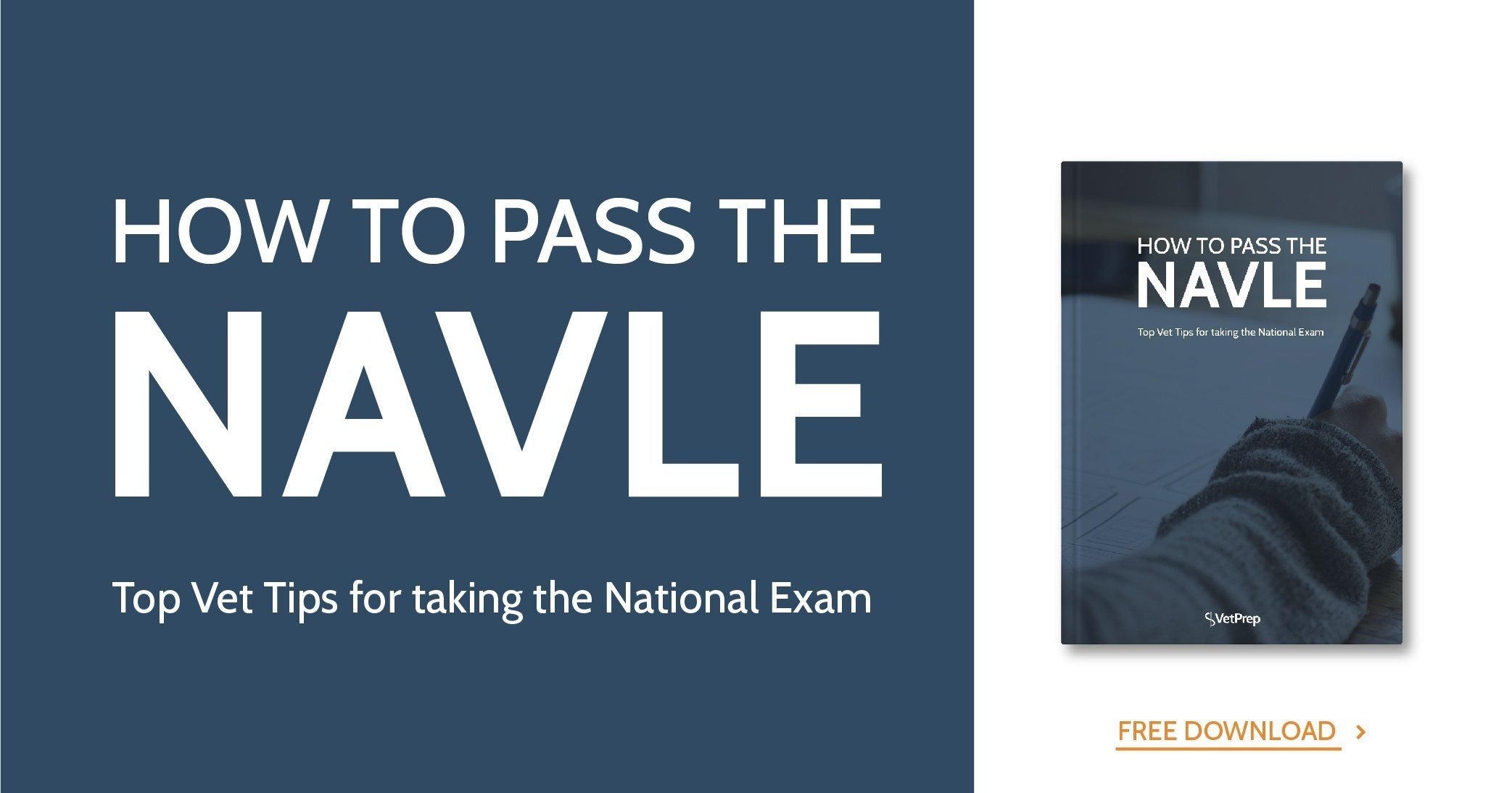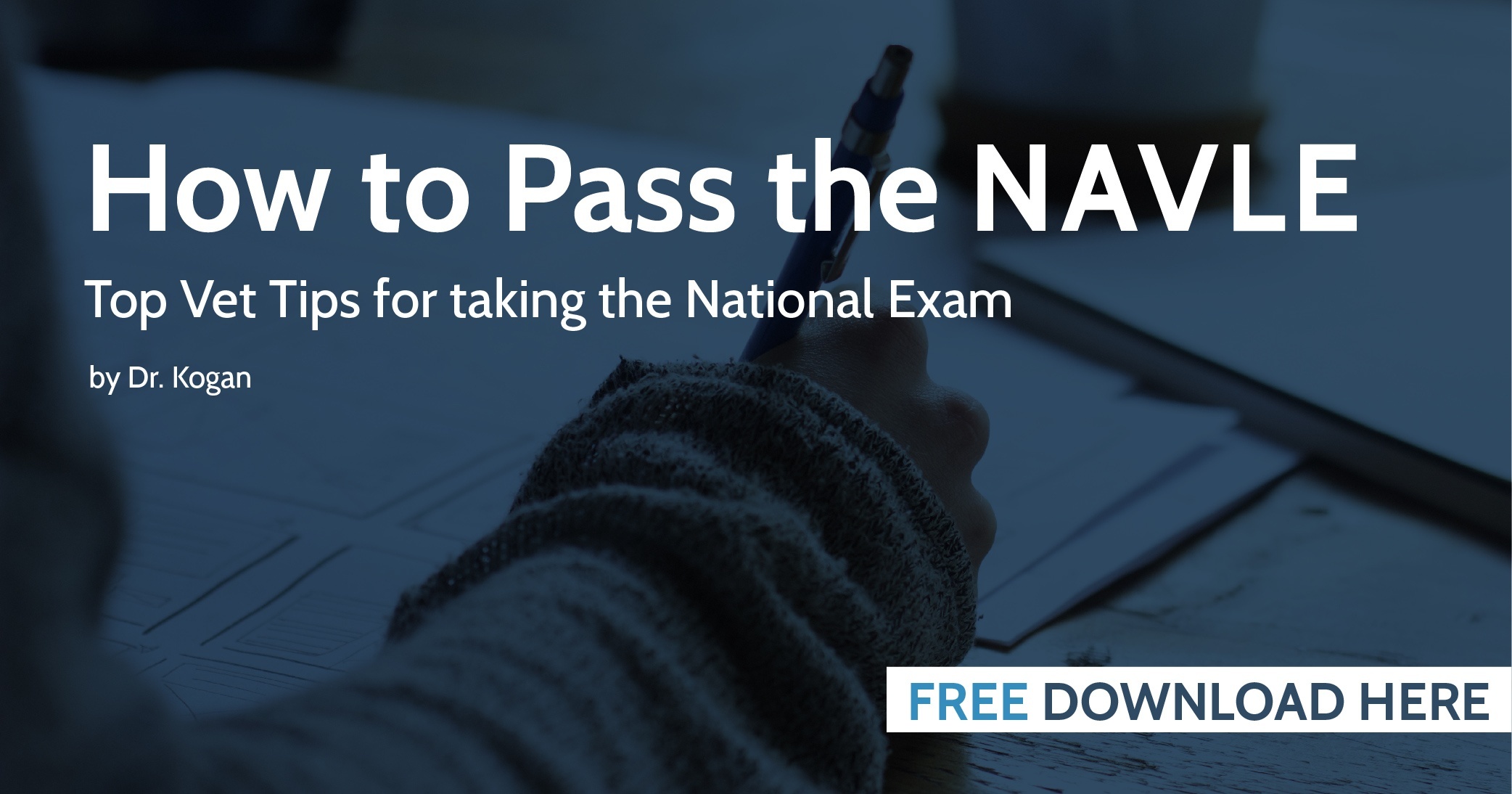
If you’re a fourth-year vet student, you have probably (hopefully?!) already registered to take the NAVLE®during the November 18th - December 14th, 2019 testing window.
Guess what?
That’s only 3-4 months away!!
Right now, stop what you’re doing.
Read these 5 questions and jot down your answers:
- A 3-year old male Maine Coon cat is presented to you for an acute onset of hindlimb pain and paresis. Physical examination reveals a Grade III left parasternal heart murmur and minimal movement in the hind legs. Femoral pulses are bilaterally absent and the hindlimb toes are cold to the touch. The cat is tachypneic, but lung sounds are normal. What is the most likely diagnosis?
- You go to a ranch to evaluate the sudden death of a bull. There is black, bloody discharge from all orifices. There is incomplete rigor mortis despite being dead for a day. What is your most likely diagnosis?
- What is the most common cause of seizures in the adult ferret?
- A horse presents to you for chronic, recurrent laminitis and skin disease. You notice on your exam that the horse has a particularly long, wavy, and matted coat. The owner mentions that this developed many months ago. What is the likely diagnosis?
- A 7-year old female spayed Standard Poodle presents with weakness and lethargy. A chemistry panel shows Na+ = 130 mEq/L (142-152 mEq/L), K+ = 6.5 mEq/L (3.9-5.1 mEq/L), BUN = 55 mg/dl (8-28 mg/dl), and creatinine = 1.0 mg/dl (0.5-1.7 mg/dl). What test would you run for a definitive diagnosis?
Okay, did you respond: saddle thrombus, anthrax, insulinoma, Cushing’s disease, and ACTH stimulation test?
I hope so!
If you missed a few questions, though, there’s no need to panic. Instead, get organized and start studying!
How should you study?
When studying for the NAVLE®, you have two primary goals:
- Review all of the content that you learned in veterinary school.
- Retain all of the content that you learned in veterinary school.
While those two goals might sound identical, it’s important to realize that they aren’t the same thing! We’ve all been there… when you review huge amounts of information, some of it tends to go in one ear and out the other.

Studies have shown that the most effective way to retain information is by employing active learning methods. Instead of passively reading and memorizing a page of text, you need to engage in activities that require you to process or recall the information.(1)
You could create flashcards, develop lesson outlines, teach the material to a friend, or take practice tests. Anything that requires you to interact with the information will increase how much of the information you retain.
How can you organize your studying?
Think of NAVLE® prep like preparing for a race. If you wanted to achieve a personal record in a 5k or a marathon, you probably would follow a training plan. That plan would include a detailed calendar, developed to help you progress at a steady pace and complete your training by race day. That plan would also incorporate a variety of workouts, each designed to add different elements to your training.
 Using a similar plan for NAVLE® studying can help you stay on track! The VetPrep Daily 3-month Study Schedule is, in many ways, a training plan for the NAVLE®. It breaks down NAVLE® prep into daily assignments, ensuring that you cover all of the necessary information while varying your study activities to work different parts of your brain.
Using a similar plan for NAVLE® studying can help you stay on track! The VetPrep Daily 3-month Study Schedule is, in many ways, a training plan for the NAVLE®. It breaks down NAVLE® prep into daily assignments, ensuring that you cover all of the necessary information while varying your study activities to work different parts of your brain.
If you want to be prepared for this November-December NAVLE® window, start the 3-month study schedule now! (Included with a paid subscription).
Resources
- Center for Research on Learning and Training. Introduction to Active Learning. University of Michigan.



